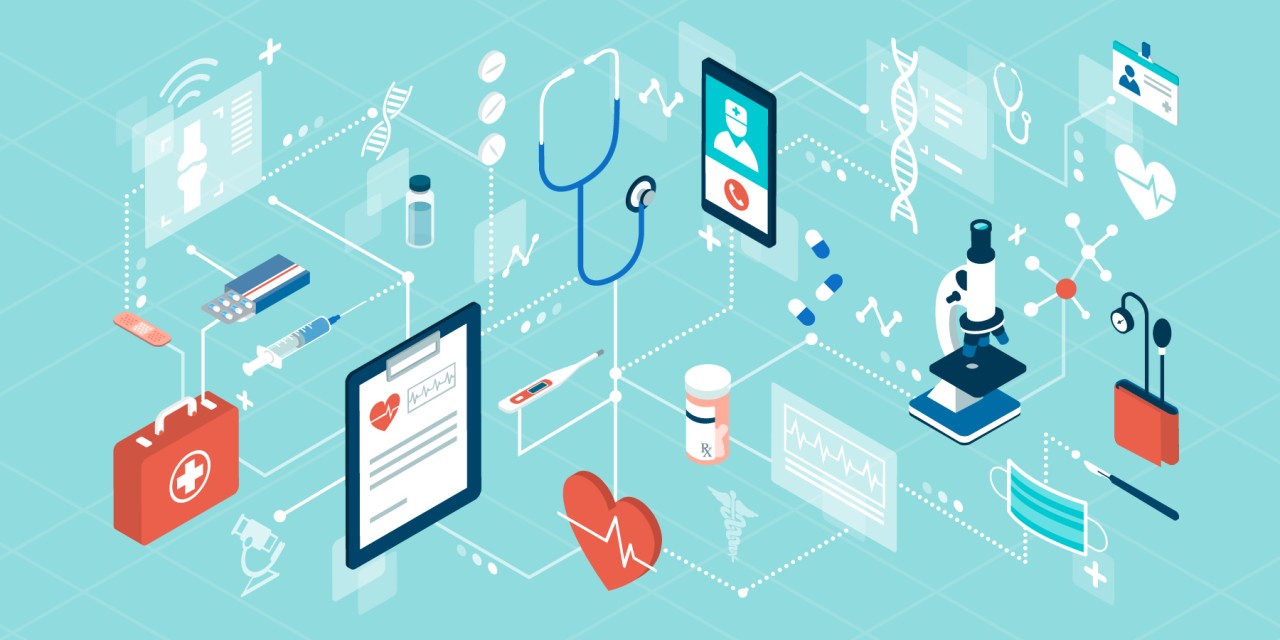The Trends in US healthcare industry is constantly evolving, driven by technological advancements, changing patient needs, and shifting regulatory landscapes. In 2023, several notable trends are shaping the healthcare landscape, with a focus on improving accessibility, affordability, and quality of care. Here are the latest trends in US healthcare:
1. Telehealth and Remote Care:
- Telemedicine Expansion: The COVID-19 pandemic accelerated the adoption of telehealth, and this trend continues to grow. Patients can now access healthcare services remotely, from routine check-ups to specialist consultations.
- Digital Health Platforms: Many healthcare providers have embraced digital platforms to offer virtual care. This allows for better access to healthcare services, especially in rural or underserved areas.
- Remote Patient Monitoring: Wearable devices and mobile apps enable patients to monitor their health conditions at home, providing real-time data to healthcare providers for more personalized care.
2. Value-Based Care:
- Shift from Fee-for-Service: The healthcare industry is moving away from the traditional fee-for-service model towards value-based care. Providers are rewarded based on patient outcomes and the quality of care provided, rather than the quantity of services delivered.
- Population Health Management: Value-based care encourages a focus on preventative measures and proactive health management, aiming to improve patient health and reduce overall healthcare costs.
3. Artificial Intelligence (AI) and Machine Learning:
- Diagnostic and Predictive Tools: AI and machine learning are being used for early disease detection, treatment recommendations, and predicting patient outcomes.
- Administrative Efficiency: AI is streamlining administrative tasks, such as billing and scheduling, reducing operational costs.
- Drug Discovery: AI is aiding pharmaceutical companies in drug development, potentially accelerating the creation of new medications.
4. Trends In US Healthcare Equity and Access:
- Addressing Disparities: The industry is actively working to reduce healthcare disparities, focusing on underserved communities, and improving access to care for vulnerable populations.
- Diversity in Healthcare Workforce: Increasing diversity within the healthcare workforce, including doctors, nurses, and other professionals, to better represent and understand the needs of diverse patient populations.
5. Personalized Medicine:
- Genomic Medicine: Advances in genomics are enabling personalized treatment plans based on an individual’s genetic makeup, resulting in more effective and targeted therapies.
- Tailored Treatment: Personalized medicine considers a patient’s unique characteristics, preferences, and medical history to create customized healthcare plans.
6. Mental Health and Behavioral Health Integration:
- Telepsychiatry: Telehealth is being used to improve access to mental health services, including therapy and counseling.
- Integrated Care: Healthcare providers are increasingly integrating mental and behavioral health services into primary care settings to address both physical and mental health needs.
7. Healthcare Data Security and Privacy:
- Cybersecurity Measures: With the increasing digitization of healthcare records and telehealth services, there is a growing emphasis on data security to protect patient information from cyber threats.
- Compliance with HIPAA: Trends in US Healthcare organizations are enhancing their compliance with the Health Insurance Portability and Accountability Act (HIPAA) regulations to safeguard patient privacy.
8. Pharmacogenomics:
- Drug Response Prediction: Pharmacogenomics involves using genetic information to predict how an individual will respond to medications. This can help avoid adverse drug reactions and optimize treatment outcomes.
9. Home Healthcare:
- Aging Population: The aging population and a preference for aging in place have led to the growth of home healthcare services, including home nursing and therapy.
- Technology-Enhanced Home Care: The use of technology, such as remote monitoring and medication management apps, is enhancing the quality and safety of home-based care.
10. Healthcare Price Transparency:
- Consumer-Focused Pricing: Increasing pressure for price transparency in healthcare is empowering patients to make informed decisions about their care and compare costs.
- Healthcare Shopping Tools: Tools and apps are emerging to help consumers navigate the complex world of healthcare pricing, enabling them to find more cost-effective options.

Conclusion:
The trends in US healthcare landscape is undergoing significant transformations in response to the evolving needs of patients, technological advancements, and healthcare policy changes. The trends mentioned above are contributing to a more accessible, affordable, and patient-centered healthcare system.
While these trends hold promise for the future, healthcare stakeholders will need to adapt and collaborate to fully harness their potential for improving the overall health and well-being of the American population.








